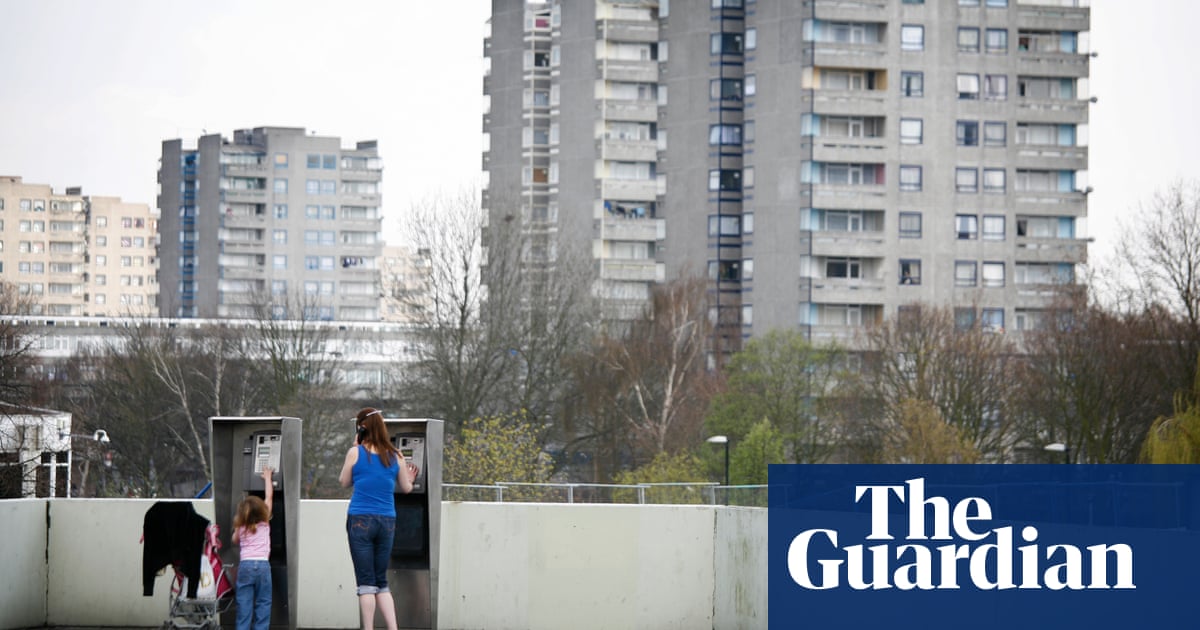
‘Not a day passes but English families are ruthlessly turned out to make room for the foreign invaders.” “They can’t get a home for their children, they see black and ethnic minority communities moving in and they are angry.” “Millions of ordinary people up and down Britain are utterly fed-up with how immigration is driving up house prices, rents and flooding social housing.”
Three quotes spanning 120 years, the first from the Tory MP for Stepney, William Evans-Gordon, speaking in a parliamentary debate in 1902; the second from a newspaper interview in 2006 by New Labour minister and Barking MP Margaret Hodge; and the third from a Spectator article last month by the academic Matthew Goodwin. A century across which the language has changed but the sentiment has remained the same.
And now we hear that the Tories are preparing to launch a scheme to provide “British homes for British workers”, promising to make it more difficult for migrants to access social housing, which most cannot access anyway. As a punchline, “British homes for British workers” is unlikely to have the political effect the Tories clearly hope it will. As with “Stop the boats”, it will make more salient an issue the government is impotent, or unwilling, to resolve. And as with “Stop the boats”, the chief beneficiaries are likely to be those who outflank the Tories on their reactionary wing, parties such as Reform.
“British homes for British workers” may be an empty slogan but it is one that Evans-Gordon would have understood. Implicit is a sentiment that echoes across the century, at the heart of which is a concern less for working-class wellbeing than for pinning on immigrants the blame for the failures of social policy to improve working-class lives.
The anxiety triggered by today’s immigrants is the same as that exuded by Evans-Gordon in 1900 at the arrival of 18,000 Jewish refugees
Evans-Gordon was the driving force behind the British Brothers League (BBL), a reactionary anti-immigration organisation with the slogan “England for the English” that was particularly vexed by the arrival of Jewish refugees fleeing pogroms in eastern Europe. “East of Aldgate,” Evans-Gordon wrote in his book The Alien Immigrant, “one walks into a foreign town”, a “Hebrew colony… swamping whole areas once populated by English people”.
Hodge and Goodwin would undoubtedly condemn the antisemitism and coarse xenophobia of Evans-Gordon and the BBL. Yet, Evans-Gordon’s description of Jews is not dissimilar to the picture often painted by campaigners against today’s immigrants: as “invaders” enforcing, in Evans-Gordon’s words, “the substitution of a foreign for an English population”, undermining British customs (“The desecration of the Sunday adds… to the increasing bitterness of feeling”), promoting criminality and vice, and robbing working people of jobs and housing.
It is not a valid comparison, contemporary immigration critics might complain, equating opposition to today’s historically high levels of mass immigration with hostility to the arrival of relatively small numbers of persecuted Jews a century ago. But that is precisely the point. The net inflow of 745,000 migrants to Britain in 2022 elicits the same anxiety and panic as that exuded by Evans-Gordon at the disembarkation of 18,000 Jews at the port of London in 1900. Whatever the numbers, and whoever the immigrants, the arguments remain the same. So does the falsity of many of the arguments.
In 2007, in the wake of Hodge’s comments, Trevor Phillips, head of the Equality and Human Rights Commission, ordered a study to see whether “white families are cheated out of their right to social housing by newly arrived migrants”. Authored by Jill Rutter and Maria Latorre, it found “no evidence that social housing allocation favours foreign migrants over UK citizens”. Neither did the government’s Migration Advisory Committee in 2014 or Oxford University’s Migration Observatory in 2022.
Figures show that 90% of new lettings for social housing go to British nationals, and 82% to white people. What prevents British workers from having British homes is not queue-jumping immigrants but the failure of the authorities to build sufficient housing. Yet the myth persists that migrants “flood” into social housing, depriving British workers of their rightful dues, a myth nurtured by politicians, pundits and academics.
What of the claim, made by critics such as Goodwin, that mass immigration drives up house prices and squeezes locals out of private renting? (A claim, incidentally, pushed by Evans-Gordon, too.) One might intuitively imagine that increased immigration creates greater demand and so would inflate house prices. But as a parliamentary briefing observed, housing demand is influenced by many complex factors and there is no “direct relationship between population change (as a result of migration) and housing demand”.
There are almost 1.5 million fewer social homes today than in 1979. Practical policies are needed to build homes for all workers
A 2018 Migration Advisory Committee study suggested that immigration increasing by one percentage point may lead to a 1% rise in house prices. The committee warned, however, that “these results should be interpreted with caution”, that other studies had suggested the reverse may be the case, and that the impact of immigration “cannot be seen in isolation from other government policies on housebuilding”, a warning often ignored by immigration critics.
Such critics have also made much of the fact that recent migrants are far more likely to privately rent, because they are excluded from social housing and cannot afford to become homeowners. The other side of this story, though, is that the collapse in the provision of social housing has pushed more and more people into the private rental market.
The Affordable Housing Commission observes that there are almost 1.5m fewer social homes today than there were in 1979. In 2000, of those in the bottom half of the income distribution, 36% lived in social housing and 12% rented privately; by 2017, social rented housing was down to 28%, while 22% were private renters. To reverse this shift, the commission’s proposals include an accelerated housebuilding programme, a “rebalancing” of social housing and private rental provision, and a reform of right to buy schemes. Not a hollow slogan, but the practical policies necessary to build homes for all workers.
The pernicious effects of a cynical slogan such as “British homes for British workers” will most immediately be felt by immigrants, through increased hostility and reduced rights. Its impact will be felt by workers more broadly, too, if anger at poor provision becomes misdirected on to immigrants, obscuring the often common experiences of migrant and non-migrant workers, making it more difficult to build the social movements needed to improve the lives of both. That, too, is something that echoes across the century.
Kenan Malik is an Observer columnist












